At a Glance
| Steam Deck | ASUS ROG Ally |
| Cheaper | More powerful |
| Better game launcher | Cleaner screen |
| In-built touchpad | Runs software natively in Windows 11 |
Performance
Performance is the main factor when it comes to the Steam Deck vs the ASUS ROG Ally. While both consoles are powerful in their own right, there is a clear winner in the ASUS ROG Ally.
The Ally uses more modern tech that’s more powerful in practice. The ability to draw higher levels of power to boost that tech also plays a part in how far the Ally can be pushed.
This is all great in theory but what does that extra power look like in action? I devised a test to give you an idea of the difference in power and it goes like this: Rather than cranking both devices up to the max, I decided to go for a like-for-like approach.
I’ve reviewed a lot of different games on Steam Deck since I started RetroResolve, so to give you an idea of the power difference, this test involves using the same in-game settings across both devices to see which performs better in terms of frames per second (FPS).
Take a look at the table below to see the results for yourself. I’ve linked all the reviews with the Steam Deck settings in if you’d like to view them, but the results speak for themselves.
| Game Name | Steam Deck (FPS) | ASUS ROG Ally (FPS) |
| Skyrim | 40 to 60 | 60 |
| Fallout 4 | 40 to 60 | 60 |
| Elden Ring | 30 | 50 to 55 |
| Cyberpunk 2077 | 39 to 40 | 50 to 60 |
| Sons of the Forest | 25 to 30 | 35 to 40 |
| Wo Long | 27 to 30 | 37 to 57 |
| House Flipper | 45 to 60 | 67 to 110 |
The ASUS ROG Ally in its Turbo mode at 25 watts consistently beats Valve’s handheld when using settings designed for the Steam Deck. This isn’t even a close match either, and it’s worth keeping in mind the Ally can go up to 30 watts if you’ve got it hooked up to the official charger.
What’s more, the settings I used were designed for the Steam Deck to get the best performance. If you tweak in-game settings to match the Ally’s power, you could push that framerate even further.
What I will say is it’s worth pushing the idea of 4K AAA gaming at 120 frames per second out of your head. The Ally is pitched as a device that plays all your games, and that’s true, but the use cases for games that run at higher resolutions and 120 frames per second are going to be few and far between. Retro titles, sure. Same for older games. But modern games will struggle to hit that target.
With AAA gaming, much like the Steam Deck, the ASUS ROG Ally is best played at 720p with AMD RSR turned on for upscaling purposes in order to keep a steady framerate and maximize visuals.
That isn’t a bad thing by any means because we are talking about a handheld here. That said, it’s worth knowing what you’re buying upfront to avoid any kind of disillusion when it turns up.
Recommendation: ASUS ROG Ally.
Which Is Easier to Use?
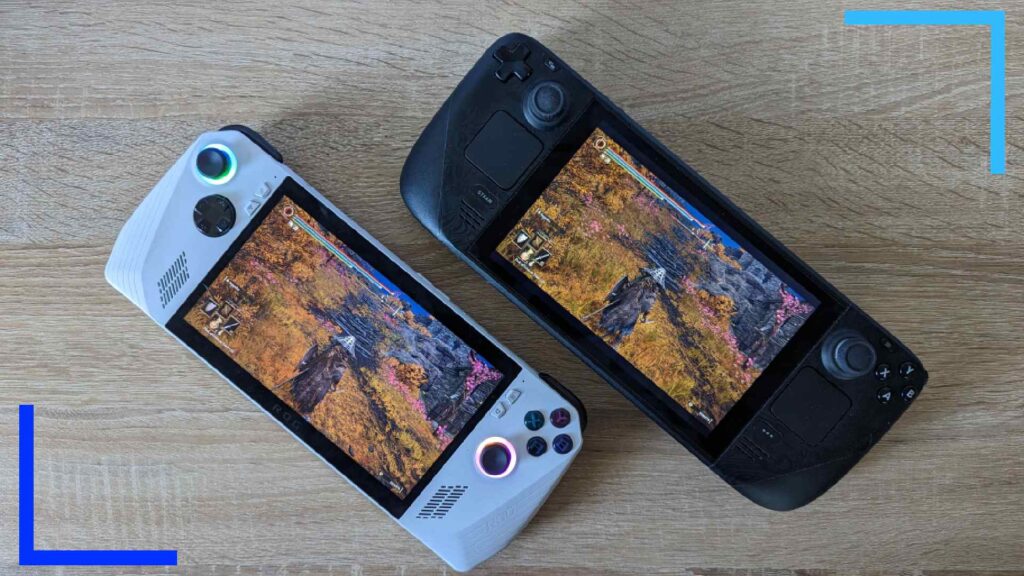
The Steam Deck runs on a modified version of Linux in SteamOS and makes use of a Linux desktop setting. The ASUS ROG Ally, meanwhile, goes with Windows 11 throughout the whole system and has a custom game launcher by the name of Armory Crate.
Let me give it to you straight: Both Linux and Windows 11 on a handheld are nightmares to deal with at times.
Linux isn’t Windows, but it can run a host of Windows apps. That’s amazing in action but it means almost everything requires more effort than it should. Getting mods to work on Skyrim, for example, requires you to download an extra tool to customize and launch mods, and because it’s Linux, there’s no guarantee it’ll work for everyone because it’s so temperamental.
Then there’s building apps with sudo and pacman commands, which as a Windows user is hard to get your head around. Even though Linux and Windows look similar, they’re very different beasts.
Over on Windows with the ASUS ROG Ally things are better and worse. Windows is more intuitive in that you find an app online, download it, then install it, but there are loads of kinks ASUS has yet to iron out.
The Armory Crate menu lets you change the system controls between desktop, gaming, or an auto mode that switches on the fly. This doesn’t always work. Especially when Steam is involved. Steam wants to treat the controls as a game, meaning you’ll need to manually change it to desktop mode then back to gaming when you actually get in-game.
Docked mode on the Ally is a mess as well. There’s currently no easy way to invoke the Armory Crate quick access menu on a controller, meaning you need to launch the app every time you need to make changes. And don’t even get me started on controllers in Windows. I use a Dualsense controller and ended up needing to install the DS4Windows app and set up a desktop and gaming profile as Windows disables controllers when User Account Control appears (the ‘do you want to run this app’ pop-up). Using DS4Windows also throws up a double input issue you need to sort out.
It’s the little things like the above that irritate, and these kinds of problems are present in both systems.
SteamOS, however, remains brilliant. It works most of the time and makes the experience of downloading, buying, and playing games as simple as it is on consoles like the Xbox Series X|S and PlayStation 5. On the Steam Deck at least. On the ASUS ROG Ally the equivalent, Steam Big Picture Mode, struggles to work as it should.
The Steam Deck is the easier to use of the two handhelds for gaming thanks to SteamOS, but it’s important to note the Steam Deck has a full one-year headstart on the Ally and this could very well change as time goes on and the Ally gets more updates.
Recommendation: Steam Deck (for ease of use).
Best for Playing Game Mods
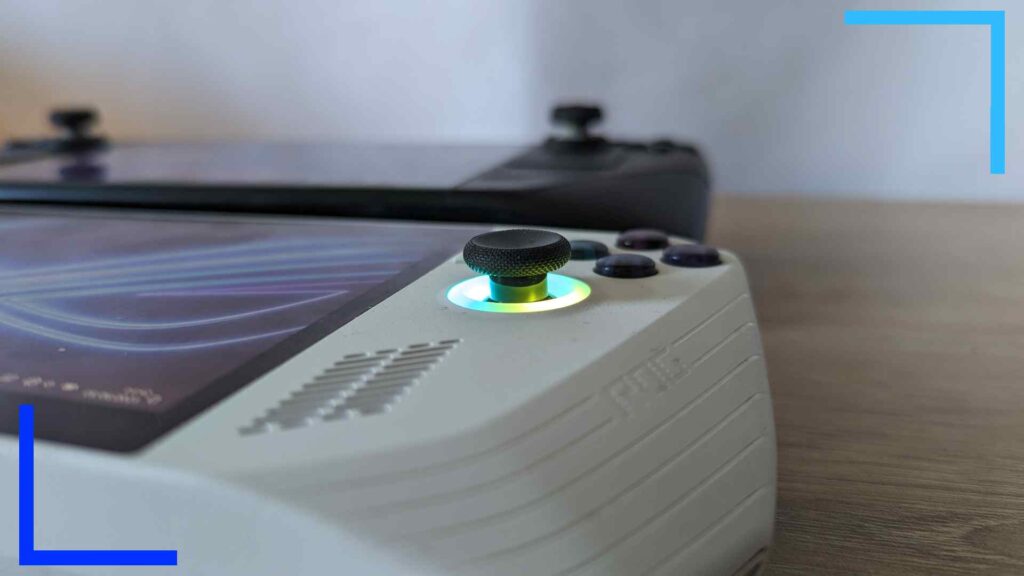
This is an easy one to solve. It is possible to install mods on many games on Steam Deck, but they often include jumping through extra flaming hoops. Take Skyrim and Fallout 4. Both need SteamTinkerLaunch to install Vortex mod manager to play Nexus mods, and there’s no guarantee they’ll work.
Games where you drag and drop files like Breath of the Wild are easy enough to get up and running, but anything that requires a launcher – like Resident Evil 4 – means you’ll need to add a program as a non-Steam game and hope it works with Linux. Again, there’s no guarantee it’ll work. When I was writing my guides to modding, it all comes down to trial and error.
With the ASUS ROG Ally, everything works because it’s running Windows 11 natively. The only thing that could get in the way is power requirements, which is the same deal as on PC. The Ally is, by far, the easier handheld of the two when it comes to installing and playing mods, and that extra power also plays a factor in how well the games will perform when mods are enabled.
Recommendation: ASUS ROG Ally.
Controls and Layout
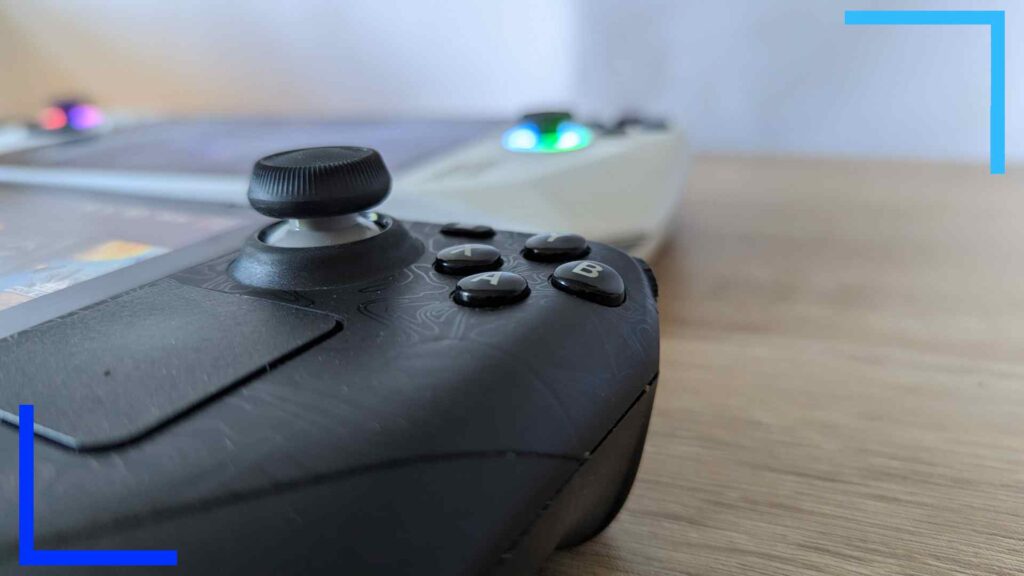
Both handhelds feature a similar layout with a similar control scheme. Across the top of both handhelds you’ll find the bumpers, triggers, power button, and the USB-C charger port.
With the Steam Deck, the triggers, face buttons, and directional pad are situated horizontally to accommodate for the trackpads. The ASUS ROG Ally, on the other hand, opts for a more Xbox-style layout and doesn’t include trackpads.
On the back of each console, you’ll find four back buttons on the Steam Deck and two on the Ally.
So, let’s talk trackpads. The biggest complaint from the community at the moment is the lack of trackpads on the Ally. I’ve been using both consoles and honestly, it’s much less of an issue than people make out. Yeah, having trackpads is great for desktop navigation, but you can still get things done with a joystick.
Using a joystick isn’t as accurate, but it’s still very usable.
In terms of differences, I prefer the feel of the cap on the Steam Deck sticks, but prefer the face buttons of the Ally as they offer more resistance. The directional pad is more fluid on the Steam Deck, but the triggers – again – offer more resistance in comparison.
There really isn’t much in it when it comes to controls and button layouts, and that’s down to how solid and smart both handhelds are. There’s very little to find fault with.
One deciding factor, for me anyway, is how the on-screen keyboard works. On the Ally, you can’t control the keyboard with the directional pad to select keys then hit ‘A’ to register them. You can use the right stick and click on them like that, but otherwise you need to physically press the buttons with your finger on the touch screen.
I know that’s why we have touch screens, obviously, but it’s a mild annoyance. It may be faster, but sometimes you just want to use the controls. The ASUS ROG Ally also doesn’t always evoke the on-screen keyboard as often as it should. You can map a button to manually bring up the keyboard, but it leaves the interface not feeling as fluid as it is on SteamOS.
Recommendation: Steam Deck (just about).
Game Compatibility
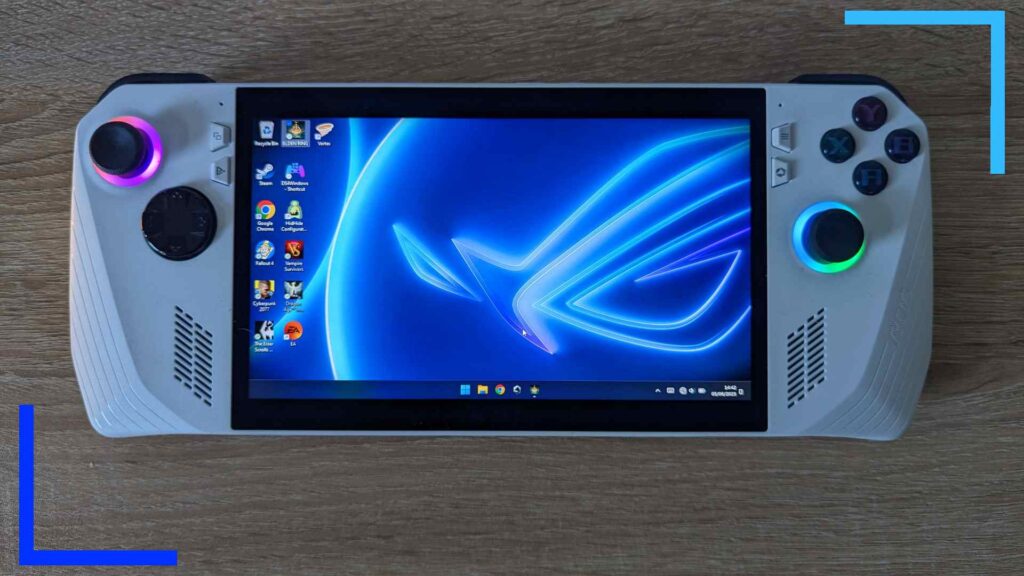
Game compatibility is stronger on the ASUS ROG Ally thanks to it being a Windows device rather than Linux. That means you’ll have access to every game available on Windows and you’ll be able to run launchers like Battle.net, EA, Ubisoft, Epic Games, and Minecraft all without any fuss or additional steps.
Not just that, but the ASUS ROG Ally also fixes some of the issues with games on SteamOS. I tested out Dragon Age: Inquisition on both Steam Deck and the Ally and the differences are striking. Due to the way BioWare handled controller inputs in the game, the Linux version can’t read the player controller in SteamOS. That means you can’t play with the native controller mode and need to map a keyboard layout to the controller to be in with a chance of playing it. Sound annoying? It is. Very.
It’s awful, and the worst way to play it. Over on the Ally, you press a button to switch a setting to controller and it works. Pretty big difference, right?
Of course, the lack of a trackpad means keyboard and mouse games will need you to map controls to the controller in Steam’s big picture mode or you hook up a physical keyboard and mouse via a dock, but that’s not a biggie as far as I’m concerned. It’s manageable.
Recommendation: ASUS ROG Ally.
Screen Quality
The ASUS ROG Ally sports a seven-inch 1080p touchscreen with a 120-hertz refresh rate. With the Steam Deck, you get a seven-inch 800p touchscreen with a 60-hertz refresh rate.
One of the big differences is the aspect ratio. The Steam Deck comes with a 16:10 screen that can handle 16:9 images but you’ll have to put up with black bars to fill out the top and bottom if the game doesn’t support 16:10. Over on the ASUS ROG Ally, everything is 16:9.
The extra vertical height of the Steam Deck screen means you get a larger picture, and that does look great. But size isn’t everything. The bump in resolution seen in the ASUS ROG Ally and the higher refresh rate means there’s no contest to be had. The Ally screens wins outright thanks to its clearer, more crisp screen.
Of course, not every game will be able to run in 1080p at 120 frames per second, but the games that can are instantly going to look better than they do on the Steam Deck.
Recommendation: ASUS ROG Ally.
Audio Quality
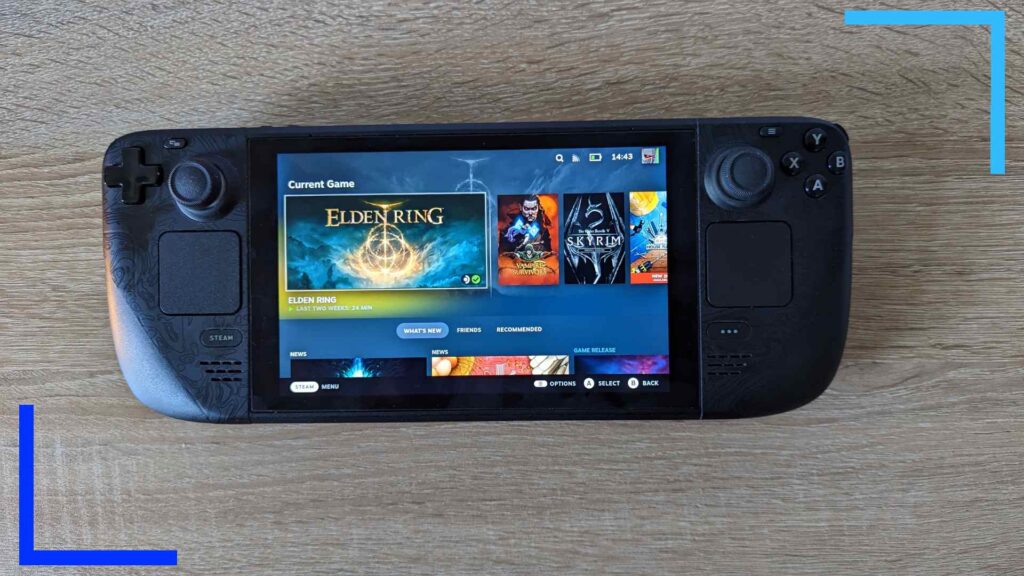
The really isn’t much in this when it comes to audio quality. There’s a lot of fancy tech jargon that goes into the speakers on each device, but I’m going to cut through that and go straight to the chase: They both offer clean audio that’s wide enough to pick out individual sounds and cues.
The only real difference is the use of Dolby Atmos in the ASUS ROG Ally. This isn’t a major consideration by any means, but the Ally can get louder and suffer slightly less distortion. I never have the volume up full blast because I’m not weird and only did this to test out what’s possible. But the difference, small as it is, is there.
During my testing I used my sound analyzer tool with Elden Ring at full volume to get some readings. The Steam Deck maxed out at 76 dB while the ASUS ROG Ally reached 83 dB. No one should play at this volume, but it’s good to see how loud these systems can get.
When it comes down to it, I don’t think either handheld is better than the other in regards to audio. Both are fantastic and leave other handhelds like the Nintendo Switch in the dust.
Recommendation: Tie.
Price
This is a much harder area to navigate. The Steam Deck is much cheaper than the ASUS ROG Ally for the most basic model. But, it’s not that simple.
The base Steam Deck comes with 64GB of eMMC storage. This isn’t enough and as someone who bought that model, it’s a problem. The Steam Deck will download all sorts of things when running games, and that ends up getting lost on the storage device and filling up space. If you know where to look you can find the files and delete them, but for those who aren’t familiar with Linux, chances are they’ll opt to reset the entire system to reclaim their storage.
| Console Name | Price |
| ASUS ROG Ally 512GB Model | $699 |
| Steam Deck 64GB Model | $399 |
| Steam Deck 256GB Model | $529 |
| Steam Deck 512GB Model | $649 |
Although the 64GB model is a steal, it’s not the end of the purchase as far as I’m concerned. I strongly recommend installing a new SSD to replace the slower and less spacious eMMC.
So, let’s look at the top-tier models. Both versions come with 512GB of storage and run from an SSD. The difference here is for an extra $50 you get double the resolution, double the hertz, and better performance and visuals. Plus you get to run software and games natively within Windows. That’s not a bad deal.
It all comes down to how much you’re looking to spend. The gulf between the base $399 Steam Deck and the $699 ASUS ROG Ally is huge and worth consideration. But if you’re looking at the 512GB Steam Deck at $649, suddenly that ASUS ROG Ally price point isn’t that far out of reach.
Also just to note, there is going to be a $599 version of the ASUS ROG Ally but I haven’t heard enough about that model yet to include it in my recommendations.
Recommendation: Depends on Your Budget.
Emulation
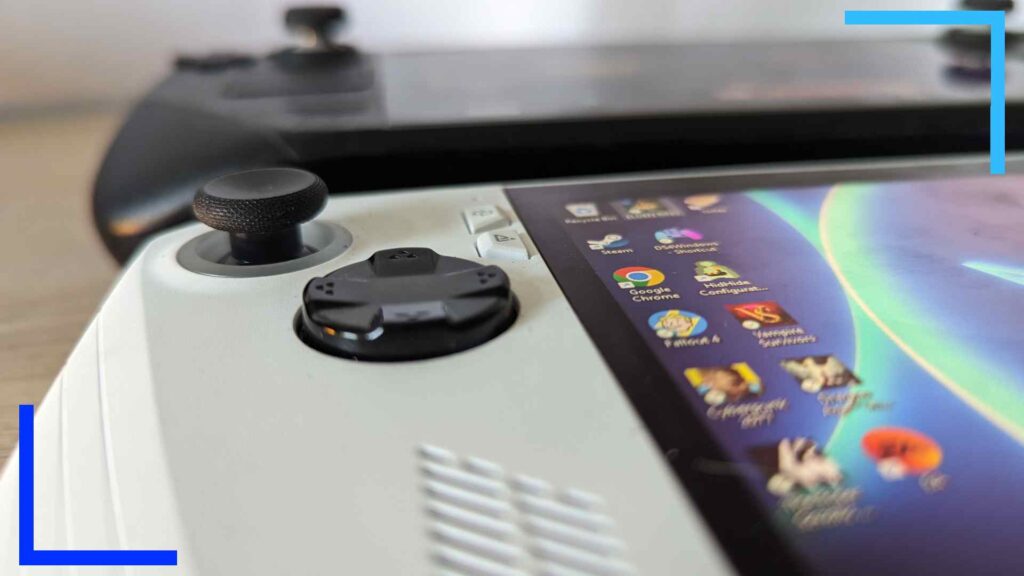
This is an interesting one because both handhelds are extremely powerful. The extra power in the Ally makes a difference, but because of how powerful they both are, the limits are more coming from the emulators themselves.
Xbox 360 emulation, for example, isn’t great, which is fine because you can buy a large selection of those games on Xbox One and Series X|S anyway. PlayStation 3 (PS3) emulation is actually in a better position in terms of compatibility and reliability.
Xbox 360, PS3, and Nintendo Switch are currently the real benchmarks to look at. With this much power, playing SNES, Dreamcast, and PS2 is going to be easy. There’s no need to get into it. It’ll work and work well. But the former three are a great place to look at what is and isn’t possible.
You will get faster and cleaner performance on the ASUS ROG Ally in my experience of testing out emulators on both systems, but the difference isn’t night and day. It’s extra frames here and there and cleaner resolutions for certain titles.
After something specific? Take Zelda: Breath of the Wild on Wii U. The Cemu emulator runs this game better than the current crop of Switch emulators, so it makes more sense to play the Wii U version than the Switch one.
The Wii U version on Steam Deck runs at between 30 and 45 frames, although that’s dependent on what’s going on in-game at the time. On the Ally, I was sitting comfortably in the 45 to 50 region. Visually the game looked cleaner on the Ally as well, but again, there isn’t much in it.
Yes, the Ally is better for emulation than the Steam Deck, but this shouldn’t be your deciding factor. Both are great at what they can run so I’d recommend factoring in other decisions over your emulation needs.
Recommendation: ASUS ROG Ally (just).
Battery Life
Both the Steam Deck and ASUS ROG Ally have poor battery life. That’s because when you’ve got this much power in such a small space, there’s no way to increase the battery life to a solid six hours without the device costing more than most want to pay.
The Steam Deck averages around two hours of battery life for AAA games, while the ASUS ROG Ally hovers around the 90 minutes mark. Obviously, you can get more battery life if you drop down the settings and power consumption, but if we’re talking about running games in handheld mode at the best they can be while not hooked up to a plug socket, it’s not great news for either console. Neither are really portable handhelds.
Recommendation: Both have bad battery life but the lesser-powered Steam Deck wins by default.
Verdict

The Steam Deck is for people who want an easy time playing PC games and for those who enjoy tinkering. The ASUS ROG Ally, however, is for people who want the cleanest visuals and access to Windows apps and software natively.
I love both consoles. But as someone who likes to mod games and is familiar with Windows, and someone who gets wowed by 120 frames per second, I’m leaning toward the ASUS ROG Ally as my preferred handheld.
In docked mode, the Steam Deck still reigns supreme, though.
What you need to consider is the cost and how tech-savvy you are. The Linux desktop environment of the Steam Deck requires patience compared with Windows. Conversely, getting used to how the Ally uses Windows itself is something you’ll need to learn again as well.
As for cost, only you can decide on that. What I can say is this: Whichever device you go with, you’re sure to come away happy.
Steam Deck purchased by RetroResolve. | ASUS ROG Ally loan unit provided by ASUS.


